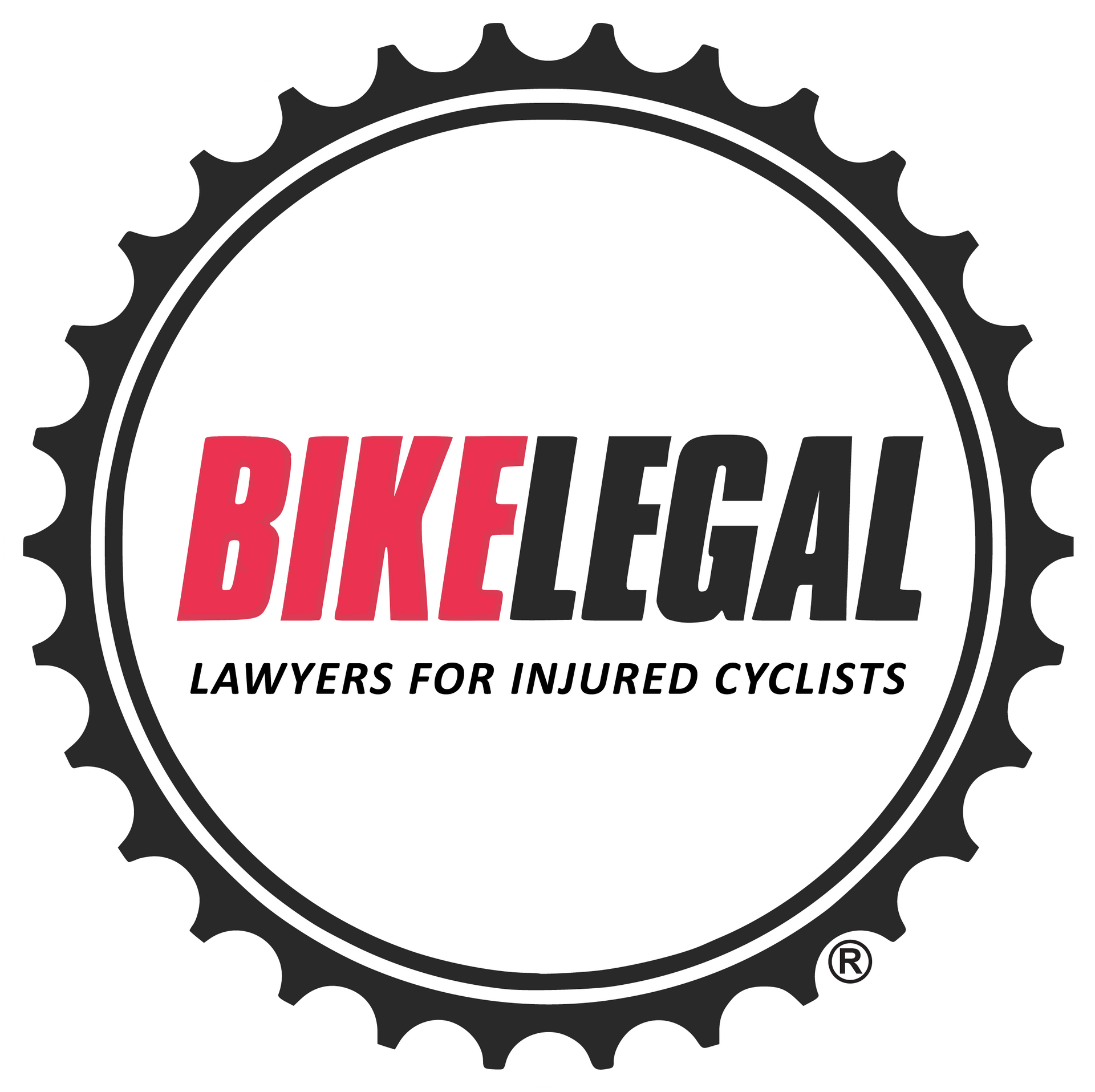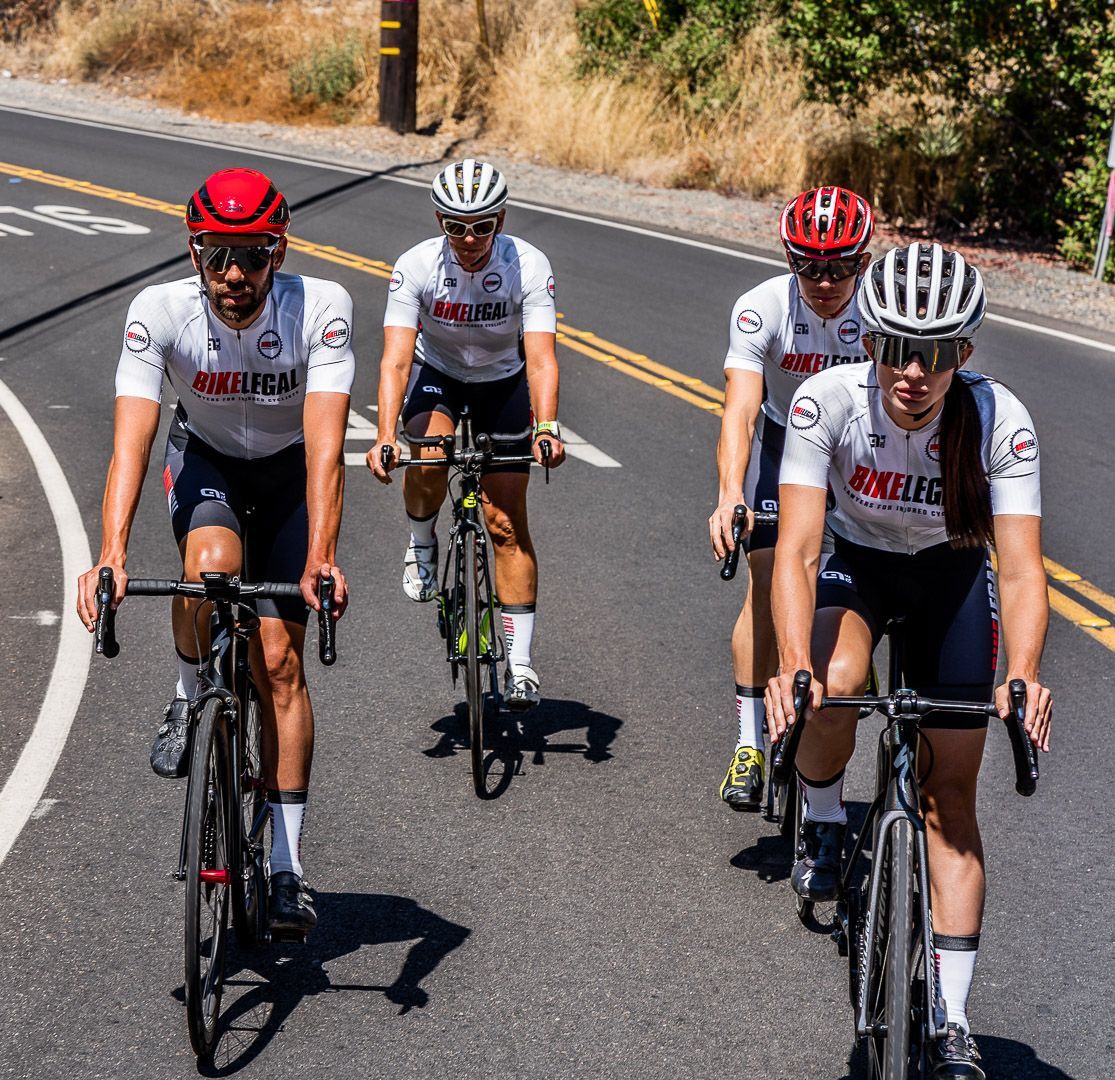Bike Accident Injury Treatment Guide | How to Recover from Cycling Injuries
Follow us on
social media!
More than 405,000 people were treated for bike-related injuries in 2023. Many delayed seeking care, underestimating the seriousness of their crash. Proper bike accident injury treatment not only supports physical recovery—it also creates critical medical documentation, which may be necessary if you choose to file a legal claim against the person who may have caused your injuries.
If you’ve been in a bicycle crash—whether it felt minor or severe—this guide can help you take the right steps. You’ll learn:
- What to do immediately after a bike crash to protect your health and legal rights
- How to spot and treat injuries like concussions, fractures, and road rash
- When to see a doctor, contact a lawyer, and what recovery actually looks like
Disclaimer
This article is for informational purposes only and is not a substitute for professional medical advice. Always seek medical attention, even for minor injuries, as proper evaluation is crucial for your health and may be necessary for official documentation if pursuing a legal claim. Bike Legal is not a medical provider and offers this content based on years of experience assisting clients with bicycle accidents, injuries, treatment, and compensation.
Table Of Contents
What to Do After a Bike Accident | Immediate Steps for Injury & Legal Protection
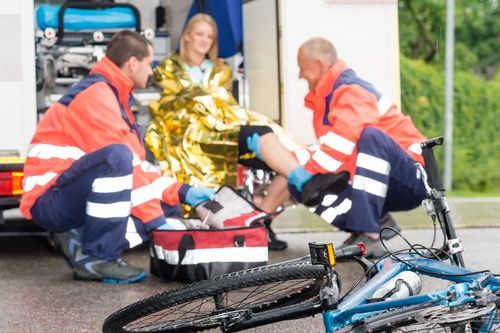
After a crash, adrenaline can trick you into thinking you’re fine — until the pain hits days later. Even minor injuries, if left untreated, can turn into long-term problems. What’s worse, without proper documentation, insurance companies may challenge or deny your claim entirely.
Here's what to do immediately after a bike crash:
- Seek medical attention right away
Head and internal injuries don’t always show symptoms right away. Whether you're feeling pain or not, get checked. A hospital visit documents the injury — and that documentation can make or break a legal claim later. - Document everything
Snap photos of your injuries, the crash scene, damaged bike or gear, and any other vehicle involved. Gather names and contact info from witnesses. File a police report — even for minor bike accidents. - Preserve physical evidence
Keep your damaged bike, helmet, and clothing. Don’t throw anything away — even your cracked sunglasses could matter. Make sure your medical records, X-rays, and incident notes are kept safe and accessible. - Call a bicycle accident lawyer
Insurance adjusters aren’t on your side. They’re trained to downplay injuries or shift blame. A bike injury lawyer can help file your insurance claim, build a strong case, and fight for the compensation you deserve.
Learn more in our guide, What to Do After a Bike Accident
When Should I Go to the Hospital? | Signs You Need Urgent Care After a Crash
Not all bike injuries are visible.
Seek emergency medical help immediately if you experience:
🚨 Head trauma, memory loss, dizziness, or confusion
🚨 Severe bleeding that doesn’t stop after 15 minutes
🚨 Broken bones, visible deformities, or inability to move a limb
🚨 Numbness, tingling, or intense swelling in any part of the body
🚨 Vomiting blood, chest pain, or abdominal swelling (signs of internal injuries)
Even if you “feel okay,” you might still be injured. A doctor can check for hidden injuries, including head injuries and internal bleeding, which may not be obvious right away.
Types of Bike Accident Injuries and Treatment | How to Treat Common Cycling Injuries
Here’s a breakdown of the most common injuries cyclists suffer when to seek medical help, and why timely medical treatment matters.
Cycling Accident Head Injuries: Concussions, Brain Trauma, Skull Fractures
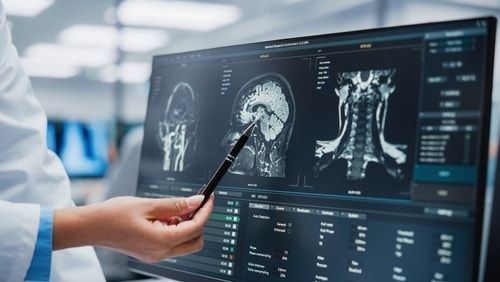
According to the National Safety Council, about one-third of non-fatal cycling injuries involve the head. The Consumer Product Safety Commission (CPSC) reports that most of the 80,000 head injuries treated in emergency rooms each year from bicycle crashes are brain injuries.
Head injuries are among the most serious consequences of a bicycle accident and can result in long-term physical and cognitive impairments. Wearing a properly fitted bicycle helmet can reduce the risk of severe brain injury by up to 75%, according to the Brain Injury Association of America.
Concussion or Traumatic Brain Injury
A concussion is a mild form of traumatic brain injury, but it can still have lasting effects. Common symptoms include:
- Emergency signs: Loss of consciousness, vomiting, seizures, or a severe headache — call 911 immediately.
- See your Doctor within a few days: Even if you’re conscious, see a doctor within a few days for mild dizziness or memory issues.
- At-home care: Rest in a quiet, dark space, stay hydrated, and avoid screens or mentally strenuous activities.
How to tell if you have a concussion from a bike accident: If you experience symptoms like confusion, forgetfulness, mood swings, or visual disturbances—even without a direct impact to the head—seek medical evaluation immediately.
Skull Fracture
Skull fractures are rare but serious. See emergency care immediately.
Even short rides can result in serious crashes. Wearing a helmet significantly reduces the risk of brain injury in a bicycle accident. Learn more about the dangers of riding without a helmet in our article Bike Accidents Without Helmets.
Back, Spine, and Neck Injuries
Back & Spinal Injuries
- Emergency signs: Inability to move limbs, numbness, or loss of bladder/bowel control — call 911.
- See your Doctor within a few days: Stiffness, minor pain in the spine.
- At-home care: Apply ice or heat packs and avoid lifting heavy objects.
Neck Injuries
- Emergency signs: Severe neck pain or numbness in the arms — seek medical attention.
- See your Doctor within a few days: Soreness or limited motion? Get checked within a day or two.
- At-home care: Ice for 48 hours, followed by heat.
Shoulder & Clavicle (Collarbone) Injuries
- Emergency signs: Bone protruding through the skin or complete immobility — head to the ER.
- See your Doctor within a few days: Swelling or difficulty moving the arm should be evaluated.
- At-home care: Use a sling, ice the area, and limit movement.
Rib Injuries
- Emergency signs: Shortness of breath or coughing up blood — go to the ER.
- See your Doctor within a few days: Bruised ribs can cause persistent discomfort. It's always best to get imaging done.
- At-home care: Rest and take slow, deep breaths. Avoid tight bandaging. Take over-the-counter pain relievers.
Wrist Injuries
- Emergency signs: Bent wrist, intense pain, or visible deformity — seek urgent care.
- See your Doctor within a few days: Swelling or tenderness should still be examined.
- At-home care: Keep the wrist elevated, apply ice, and rest the hand.
Even if you haven't had a bicycle accident, hand numbness while riding your bike is one of the most common cycling injuries. Check out our guide on Cyclists' Palsy to learn the causes, prevention, and symptoms.
Soft Tissue & Musculoskeletal Injuries
Bruises
- Emergency signs: Rapid swelling or deep purple bruising — possible internal damage.
- See your Doctor within a few days: Mild swelling or discoloration.
- At-home care: Apply ice for 10-15 minutes every few hours and elevate the affected area.
Lacerations (Cuts)
- Emergency signs: Uncontrollable bleeding or exposed tissue — go to the ER.
- See your Doctor within a few days: Minor cuts with controlled bleeding.
- At-home care: Clean the wound with soap and water, apply antibiotic ointment, and cover with a bandage.
Road Rash
- Emergency signs: Debris in the wound or large abrasions — urgent care may be needed.
- See your Doctor within a few days: Minor scrapes with some bleeding.
- At-home care: Rinse thoroughly, apply antibiotic ointment, and keep the wound covered.
Musculoskeletal injury (Sprains & Strains)
- Emergency signs: Inability to move a joint or bear weight — Best to go to Urgent Care.
- See your Doctor within a few days: Mild swelling and tenderness.
- At-home care: Use the R.I.C.E. method — Rest, Ice, Compression, Elevation.
Internal & Abdominal Trauma
Internal Injuries
- Emergency signs: Dizziness, vomiting blood, or intense abdominal pain — go to the ER ASAP.
Abdominal Trauma
- Emergency signs: Swelling or signs of internal bleeding — go to the ER.
- See your Doctor within a few days: Minor bruising or discomfort.
- At-home care: Rest, apply ice packs, and avoid strenuous activity.
Facial, Dental, and Eye Injuries
Facial Trauma
- Emergency signs: Broken bones or deep cuts on the face — head to the ER.
- See your Doctor within a few days: Swelling or bruising.
- At-home care: Ice the area and avoid pressure.
Dental Injuries
- Emergency signs: Knocked-out tooth — preserve in milk and seek emergency dental care.
- See your Doctor within a few days: Chipped or cracked teeth.
- At-home care: Rinse mouth; use dental wax if sharp edges irritate.
Eye Injury
- Emergency signs: Loss of vision or eye bleeding — go to the hospital.
- See your Doctor within a few days: Redness or minor irritation.
- At-home care: Rinse with clean water and avoid rubbing.
Knee Injuries and Dislocations

Knee Pain
- Emergency signs: Inability to walk or severe swelling — get urgent help.
- See your Doctor within a few days: Mild stiffness or pain.
- At-home care: Rest, ice, and gentle stretching.
Joint Dislocation
- Emergency signs: Visible joint deformity—go to the ER.
- See your Doctor within a few days: Minor pain and swelling.
- At-home care: Avoid moving the joint, ice, and elevate.
Tips for At-Home Bike Injury Treatment and Recovery | Speed Up Your Healing Process
Recovering from a bike crash can be frustrating, especially when you're dealing with pain, stiffness, or bruising that lingers longer than expected. While some injuries require professional medical treatment, minor injuries—like soft tissue strains and bruises—can be managed at home with the right approach.
Below are key tips to help speed up your healing process, reduce pain, and get back on the bike as soon as possible.
Always consult your doctor before trying an at-home or self-care treatment for injuries.
Contact a bicycle accident lawyer if your injuries may be the result of someone else's negligence. Bike Legal Lawyers for injured cyclists specializes in seeking compensation for bicycle crash injuries.
Immediate Treatment: RICE Method | Reduce Pain & Swelling Fast
For minor injuries, start with the RICE method to jumpstart healing and prevent complications:
- Rest – Avoid using the injured body part to allow healing.
- Ice – Apply cold packs for 15–20 minutes every two hours during the first two days.
- Compression – Wrap the injured area with a bandage or brace for support.
- Elevation – Keep the injured limb raised above heart level to reduce swelling.
💡 Pro Tip: For best results, follow the RICE method for the first 48–72 hours after the injury.
Pain Relief Treatment Options
Managing discomfort early helps prevent chronic issues. Always consult with your healthcare provider before implementing home care.
- Over-the-counter meds: Ibuprofen and naproxen help reduce swelling; acetaminophen eases pain.
- Topical creams: Bengay, Aspercreme, or Icy Hot can help relieve sore muscles.
- Alternative therapies: Massage, acupuncture, and even CBD-based creams can support recovery.
- Hot/cold contrast: To relax tight muscles, use ice early on, then switch to heat after 48 hours.
- Epsom salt soaks: Great for deep soreness—magnesium helps with inflammation and circulation.
- Foam rolling + gentle stretches: Help improve blood flow and prevent muscle tightness.
- Physical therapy (when needed): If symptoms persist, consult a physiotherapist to avoid long-term issues.
💡 Reminder: Avoid consuming alcohol. It increases inflammation and slows down your body’s ability to heal.
Why Sleep is So Important for Bike Injury Recovery

You might not realize it, but sleep is one of the most effective treatments for bike injuries at home. Here’s why:
- Sleep as much as possible – Your body heals during deep sleep, so aim for 7–9 hours per night.
- Use old sheets – When you're recovering from an open wound or road rash, it's common to wake up stuck to your bedding. To avoid ruining good sheets, use older ones you don’t mind staining or throwing away.
- Position yourself for comfort – Use extra pillows to support injured areas and avoid rolling onto painful spots.
- Go to bed early – Recovery can reduce sleep quality, so allowing extra time in bed can make up for discomfort-related wakeups.
💡 Recovery tip: If wounds are sticking to sheets, try applying a moist healing ointment before bed to prevent sticking to the fabric.
Nutrition for Bike Injury Recovery | What to Eat After a Crash

After a bicycle accident, your body needs the right fuel to repair tissue, reduce inflammation, and rebuild strength. Once your doctor has cleared you to eat normally, focus on nutrient-dense meals that support healing and recovery. This is not the time to cut calories—or to rely on processed, high-sugar foods. Instead, give your body what it needs to recover efficiently.
Key Nutrients for Injury Recovery:
- Protein – Vital for rebuilding muscles, bones, and connective tissue. Prioritize lean meats, eggs, tofu, legumes, and protein-packed meals.
💡 Tip: Eat an extra serving of protein daily during recovery to support tissue repair. - Anti-Inflammatory Foods – Reduce swelling and speed up healing with ingredients like turmeric, ginger, berries, leafy greens, and salmon.
- Healthy Fats – Support cell regeneration and hormone balance. Add sources like avocados, olive oil, nuts, and seeds.
- Antioxidants – Help fight cellular damage caused by trauma. Load up on berries, citrus fruits, spinach, and colorful vegetables.
- Calcium & Vitamin D – Essential for bone healing. Found in dairy, fortified plant milks, salmon, and leafy greens.
- Iron & Magnesium – Aid in oxygen delivery and muscle function. Choose dark chocolate, seeds, whole grains, and green vegetables.
- Hydration – Drink plenty of water and replenish electrolytes, especially if you're feeling fatigued or sore.
Eating well after a crash won’t just help you heal faster—it can also help you regain strength and get back on the bike with more confidence.
Self-Care for Bicycle Accident Injuries
Healing isn't just physical; it also involves giving yourself time to rest and recover mentally. With your doctor's approval, consider incorporating these self-care practices:
- Get a massage – Relieves muscle tension and improves blood flow.
- Try gentle stretching – Helps maintain range of motion and prevents stiffness.
- Take it easy – Rest and engage in light activities you enjoy, like watching movies or reading. While it may seem like downtime, your body is using this time to heal and recover.
- Let wounds breathe (safely) – When possible, let wounds air out in a clean environment to speed healing.
- Shield healing skin – Protect new skin from sunlight to prevent scarring.
💡 Skin-saving tip: If your scabs crack open, apply petroleum jelly or antibiotic ointment to keep the skin flexible while healing.
Active Recovery for Bike Accident Injuries
Moving too soon can set you back, but staying completely still can slow you down. The trick? Light, strategic movement once cleared by your doctor.
- Listen to your body – If light walking or stretching feels good, keep going. If pain flares up, take it easy.
- Gentle spinning – A stationary trainer can maintain blood flow and joint mobility without added risk.
- Short walks – A simple walk can reduce stiffness and support circulation.
💡 Test tip: If you're unsure whether you can ride, try spinning lightly on a stationary trainer for a short period. If the pain worsens, take more rest days.
Indoor cycling on a stationary trainer is a common way for cyclists to recover from injuries—once they’ve been cleared by a doctor. To explore set-up options, equipment, and costs, check out our Guide to Indoor Cycling.
PTSD After a Bicycle Accident | Mental Health Recovery for Cyclists
Not every injury from a bike accident is physical. Many cyclists suffer emotionally long after the wounds have healed. Post-traumatic stress disorder (PTSD) can develop after a severe crash—especially if it involves head injuries, broken bones, or a near-death experience.
What is PTSD?
PTSD is a mental health condition triggered by a terrifying event—like a serious bike crash. It causes long-lasting emotional and psychological effects, even if the physical injuries seem minor or have already healed. For cyclists, PTSD may start subtly but grow into a serious barrier to daily life.
Symptoms of PTSD in Cyclists
Some of the most common signs of PTSD after a bicycle crash include:
- Recurrent flashbacks or nightmares of the accident
- Avoidance of certain roads or even riding altogether
- Anxiety, irritability, or panic attacks
- Difficulty sleeping or concentrating
- Heightened stress response in everyday situations
How PTSD Differs from Physical Injuries
Unlike broken bones or road rash, PTSD doesn’t show up on an X-ray. But it can interfere with relationships, work, and overall quality of life just as much—if not more. Left untreated, it can lead to long-term emotional distress.
Treatment for PTSD
The healing process for PTSD often involves:
- Therapy: Cognitive Behavioral Therapy (CBT), Eye Movement Desensitization and Reprocessing (EMDR), or trauma-focused counseling
- Support groups: Connecting with others who’ve experienced bike crashes
- Gradual reintroduction to cycling: Some find recovery by riding again—slowly, safely, and with support
Pro tip: Always seek professional guidance if you're experiencing emotional distress after a crash. Mental health is just as vital as physical health.
Legal Considerations for PTSD Claims
If you’ve developed PTSD due to a bicycle accident, you may be entitled to bicycle accident injury compensation. It’s essential to gather medical documentation, such as diagnoses, from mental health professionals. A bicycle injury lawyer can help fight for compensation for pain and suffering.
Contact Bike Legal today for a free consultation to discuss your bicycle accident claim.
How Long Does It Take to Recover from a Bike Accident? | Injury Healing Timelines
The recovery time from a bike crash depends on the severity of your injuries, your overall health, and how well you follow your treatment plan. Here's a general breakdown:
- Bruises and minor scrapes: 1 to 2 weeks
- Road rash: 2 to 3 weeks (if not infected)
- Sprains or soft tissue injuries: 2 to 6 weeks
- Fractures or broken bones: 6 to 12 weeks
- Severe injuries (like concussions or spinal trauma): Several months to a year
5 Reasons to Consult a Bicycle Accident Lawyer | Protect Your Rights
If you’ve been injured in a bicycle accident, consulting a bicycle accident lawyer can be crucial for protecting your rights and securing the compensation you deserve.
1. Insurance Companies Prioritize Profits—Not Injured Cyclists
Insurance adjusters are trained to minimize payouts. They may question the severity of your injuries or claim you were partially at fault to reduce what they owe.
A bicycle accident attorney works to protect your rights and maximize your compensation—covering medical bills, lost income, rehabilitation, and more.
Recovery isn’t just physical. Learn more about the role of a bicycle accident lawyer beyond medical bills.
2. A Bicycle Accident Lawyer Can Help Establish Fault
Proving fault in a bicycle accident isn’t always straightforward. A bicycle accident lawyer can help by collecting key evidence—such as camera footage, witness statements, and police reports—to build a strong case. They understand how to interpret traffic laws and highlight driver negligence, giving injured cyclists a better chance of securing the compensation they deserve.
3. You’re Likely Owed More Than You Think
Bike crash settlements may cover:
- Medical bills
- Lost wages
- Therapy for PTSD
- Pain and suffering
- Long-term care
- Physical Therapy
- Property Damage
Without legal representation, you might settle for far less than what your case is truly worth.
4. A Lawyer Handles Legal Deadlines and Paperwork
Every state has a statute of limitations for filing a bicycle injury claim. Missing this deadline can bar you from seeking compensation. A bike accident attorney ensures all paperwork is filed correctly and on time, keeping your case on track.
5. Skilled Negotiation with Insurance Companies and Defendants
Whether negotiating a settlement or taking your case to court, a bicycle accident attorney knows how to counter lowball offers and pressure tactics. Their goal is to secure full and fair compensation on your behalf.
Want to understand your rights after a crash? Explore our in-depth guide on the impact of bicycle accidents and how a bicycle accident lawyer can protect your future.
Compensation You May Be Entitled to After a Bicycle Accident
If you’ve been injured in a bicycle accident, you may be entitled to financial compensation for your injuries, property damage, and more. The amount you may recover depends on the severity of your injuries, who was at fault, and how the accident has impacted your life. Consulting a bike crash lawyer can help you receive the full compensation you deserve.
Types of Compensation You May Be Eligible For
Medical Expenses
- Emergency room visits, ambulance transport, and hospital stays
- Follow-up doctor visits, surgeries, rehab, and physical therapy
- Medication, medical equipment (crutches, braces, mobility aids)
- Future medical costs for long-term or permanent injuries
Lost Wages and Future Earnings
- Time missed from work during the recovery process
- Loss of earning capacity if your injuries limit your ability to work
- Disability compensation if you can’t return to your job
Pain and Suffering
- Compensation for physical pain caused by the accident
- Emotional trauma, including PTSD, anxiety, and depression
- Loss of enjoyment of life—especially if you can no longer bike or participate in your favorite activities
Property Damage
- Repair or replacement of your bicycle, helmet, and damaged gear
- Compensation for destroyed personal items like your phone, bicycle computer, lights, camera, and other cycling accessories
Wrongful Death Damages (For Families Who Lost a Loved One)
- Funeral and burial costs
- Loss of financial support from the deceased
- Compensation for emotional pain and suffering
Factors That Affect Your Compensation
Every bike crash injury is different, which means the amount of bicycle accident injury compensation you’re entitled to can vary widely.
✔ Severity of injuries – More serious injuries like broken bones, traumatic brain injuries, or spinal damage typically result in higher compensation.
✔
Liability – If another party (like a negligent driver, government agency, or product manufacturer) is proven to be at fault, your case becomes much stronger.
✔
Insurance coverage – The at-fault party's insurance and your own coverage may impact the payout.
✔
Long-term effects – If you suffer from chronic pain, permanent disability, or need extended medical care, your compensation may increase.
Be Prepared Before Your Next Ride | Safety Checklist for Cyclists
Whether you bike to work or ride for fun, this quick bike safety checklist before riding can make all the difference.
Carry a Basic First Aid Kit for Emergencies
Minor crashes like scrapes or road rash are common, but having a bicycle emergency kit can help you treat injuries immediately. Your kit should include:
✔ Antiseptic wipes to clean wounds
✔ Bandages and gauze for cuts and scrapes
✔ Medical tape or wound closure strips
✔ Antibiotic ointment to prevent infection
✔ Pain relievers (ibuprofen or acetaminophen)
✔ Tweezers for removing debris like glass or gravel
Leave with a Fully Charged Cell Phone
Your phone is your lifeline in an emergency. Before you ride:
✔ Charge your phone fully
✔ Save emergency contacts
✔ Enable location sharing
✔ Pack a portable power bank for long rides
Let Friends or Loved Ones Know Your Route
Especially if you're riding solo, always:
✔ Share your route and expected return time
✔ Set check-in points for long rides
✔ Tell someone what to do if you don’t return on time
This small step can be life-saving if you get injured or lost.
Consider Using Crash Detection Devices
Technology can take safety up a notch. Devices to consider:
- Garmin Edge and Wahoo ELEMNT – Have built-in crash detection and can notify emergency contacts.
- Apple Watch or iPhone Fall Detection – Automatically sends an alert if you stop moving after a crash.
- Specialized ANGi Sensor – A helmet-mounted sensor that detects severe impacts and alerts emergency contacts.
For more tips, check out this article on ways to prevent accident injuries while cycling.
Ride Protected, Ride Safe with Bike Legal
Even with the best preparation, accidents happen. That’s where Bike Legal comes in. Our experienced bicycle accident attorneys are dedicated to protecting your rights, helping you recover compensation, and guiding you through every step—from injury to legal resolution. Whether it’s a minor crash or a life-altering injury, we’re here so you don’t have to navigate it alone.
Why cyclists trust Bike Legal - The nation's #1 bicycle accident lawyer:
- We fight for full compensation—medical bills, lost wages, and pain & suffering.
- We handle the paperwork, negotiations, and legal stress so you can focus on healing
- We understand cycling culture—and we know how to win your case
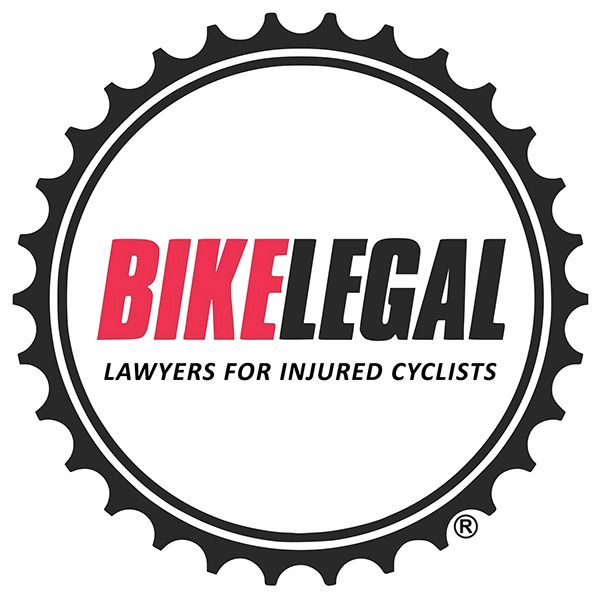
FAQs
1. How long do bike injuries last?
The recovery time depends on the type and severity of the injury:
✔ Minor scrapes, bruises, and road rash – 1 to 3 weeks
✔ Sprains, strains, or soft tissue injuries – 2 to 6 weeks
✔ Fractures or broken bones – 6 to 12 weeks
✔ Severe injuries (head trauma, spinal injuries, deep lacerations) – Months to a year
💡 Tip: Support recovery with rest, proper nutrition, and rehab. Always consult a healthcare professional.
2. What is the most common bike injury?
The most common injuries from a bike crash include:
✔ Road rash – Abrasions from sliding on pavement
✔ Bruises and contusions – Impact injuries that cause swelling and discoloration.
✔ Fractures
(especially wrist, collarbone, and ribs) – Often occur when cyclists try to brace their fall.
✔ Concussions and head injuries – Even with a helmet, a fall can result in a mild traumatic brain injury.
3. How do you treat accident injuries at home?
Always consult a healthcare professional first. For minor injuries, here’s how to recover from a bike crash safely at home:
✔
For bruises and swelling: Use the
RICE method (Rest, Ice, Compression, Elevation) to reduce inflammation.
✔
For muscle pain and soreness: Alternate
ice and heat therapy, gently stretch, and use topical pain relievers.
✔
For minor cuts and scrapes: Clean the wound, apply antiseptic, and keep it covered.
✔
For sprains or joint pain: Use a
brace or wrap for support and take over-the-counter pain relievers like ibuprofen.
✔
For road rash: Keep the area
clean, covered, and moisturized to promote healing and prevent infection.
4. How to Treat Road Rash After a Bike Accident?
Road rash is a skin abrasion caused by friction when a cyclist slides on the pavement during a bike crash. It can range from surface-level scrapes to deep wounds exposing muscle.
How to treat road rash:
✔
Clean the wound immediately – Use soap and water or saline solution to remove dirt and debris.
✔
Apply an antiseptic – Prevents infection and promotes healing.
✔
Cover with a non-stick dressing – Use hydrocolloid or non-adherent bandages to keep the wound moist and protected.
✔
Change dressings regularly – Monitor for signs of infection (redness, swelling, pus).
✔
Keep the area covered when outside – Sun exposure can cause
scarring and discoloration on healing skin.
💡 Tip: For deep or heavily bleeding wounds, seek medical attention immediately. Stitches or professional wound care may be necessary for severe road rash.
5. Can you get a concussion from falling off your bike?
Yes, even with a helmet, you can suffer a concussion from a crash.
Common concussion symptoms:
✔ Loss of consciousness
✔ Headache, dizziness
✔ Confusion or memory gaps
✔ Nausea, vomiting
✔ Slurred speech or disorientation
If you experience any of these symptoms, go to the emergency room immediately.
💡 Tip: Helmets significantly reduce the severity of head injuries, but they don’t prevent all concussions. Always replace your helmet after a crash to ensure it provides full protection.
